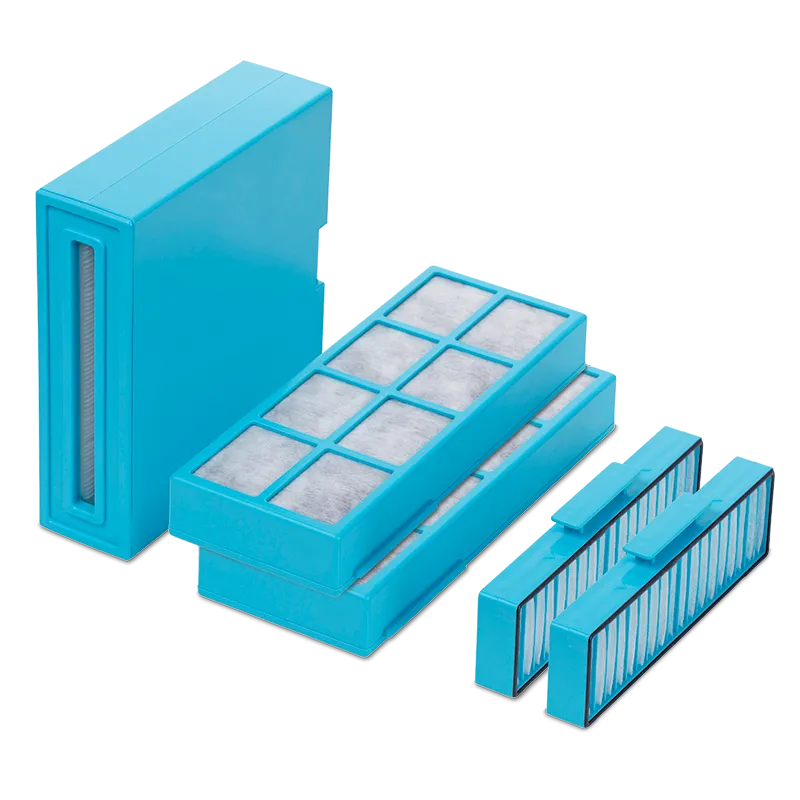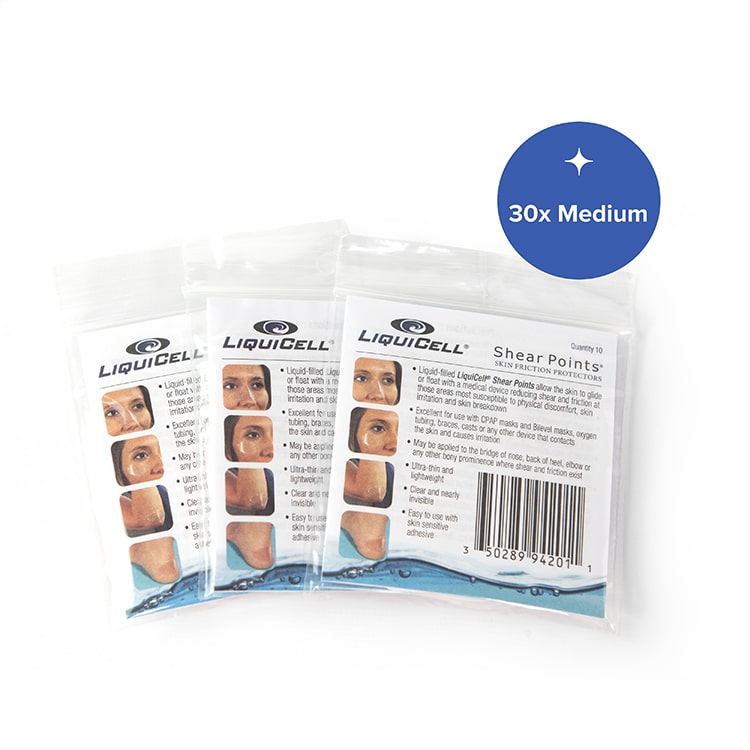Air Cleaner
When it comes to getting pollutants and pathogens out of the air, there are a few different goals and methods. If an overall reduction in the number of particles in the air is the goal, then a simple fibrous filter can work. HEPA and ULPA filters remove a wide variety of particles.
Volatile organic compounds and other harmful chemicals that may be too small to be trapped by a HEPA or ULPA filter can be removed with an activated carbon filter. Air purifiers with carbon filters combine a fibrous filter stage with an activated carbon or charcoal stage to remove both particulate matter and gaseous pollutants.
However, it may also be beneficial to kill or otherwise neutralize pathogens in the air. Air cleaners kill and deactivate bacteria and viruses. Air cleaners use a variety of means to damage microorganisms that are present in untreated air in order to reduce the transmission of airborne pathogens.
SoClean 3-Stage Air Purifier+
Danger is in the air
The air carries microorganisms, spores, and viruses, which can cause a variety of issues for humans. Airborne viral pathogens such as influenza and COVID-19 cause significant human mortality. Bacteria that cause tuberculosis and Staphylococcus aureus infections are serious causes of medical complications and can be transmitted through the air at hospitals.1
In industrial farming operations, use of air cleaners or air sanitizer machines to reduce the transmission of pathogens can be crucial.2 Indoor plant farms that produce products such as hothouse tomatoes or ornamental plants are often vulnerable to airborne transmission of pathogens.3 The controlled temperature and humidity conditions with rows of genetically identical plants give molds and mites the perfect opportunity to run wild. A clean air machine or air sanitizer that kills pathogens may be used to deactivate pathogens.
Killing or otherwise sterilizing the bacterial and viral pathogens isn’t just for hospitals. The benefits of air filtering can be brought home with residential air cleaners.
Methods of cleaning
An air cleaning system involves some method of airflow so that the air in the surrounding environment can be cleaned. Passive systems rely on the natural circulation of air within a space to bring the air into contact with the cleaning method. Active systems use a fan or other means of circulation to pass air through a cleaning chamber where pathogens can be killed or deactivated.
SoClean 3-Stage Air Purifier+
Shop NowIn passive systems, an ultraviolet lamp can be used to kill bacteria and deactivate viruses in air that flows past the lamp. Ultraviolet germicidal irradiation becomes more effective the closer any given volume of air is to the ultraviolet lamp, so active systems which draw air into the UV chamber can treat a larger volume of air.
An air cleaner can also use activated oxygen to disarm pathogens. Activated oxygen reacts with bacteria and viral genetic material and can render them unable to replicate. Since a single bacterium or virus needs to reproduce in order to make people sick, sterilizing the pathogen reduces their ability to cause an infection.
More Products from SoClean
SoClean Air Purifier+ Filter Kit
$149
Portable Outlet CPAP Backup Battery V2
Save $50!
New and improved model - when the power goes out, your CPAP stays on!
Just plug the new Portable Outlet UPS between your CPAP equipment and your bedside wall socket to protect from loss of power due to storms or outages.
$349
LiquiCell Shear Points, 30 Skin Friction Protectors, Medium
Great for use anywhere skin would benefit from cushioning and protection. Ultra-thin, liquid-filled strips protect skin and stay in place.
FSA/HSA eligible LiquiCell Shear Points are latex-free, ultrathin, clear liquid-filled membranes that provide a synthetic, external cushion. It reduces painful friction by allowing an object to glide or float over the skin. Gentle skin adhesive keeps LiquiCell Shear Points securely in place overnight, while allowing easy and painless removal in the morning.
Medium, 30 per box, each 2.75" wide by 1.3" high
Also available: Small (30 per box, each 2.2" wide by 1.1" high) LiquiCell Shear Points are excellent for use on the bridge of the nose to reduce irritation from sleep equipment such as face masks.
$19.95
FAQs
Strictly speaking, the purpose of an air cleaning system is to disable any organisms or viruses in the air. HEPA filters, or High Efficiency Particulate Air filters, reduce the number of particles in the air. A device that is sold as an air cleaner may include an integrated HEPA filter, but it is possible to clean the air of pathogens without using a HEPA filter.
An air purifier attempts to remove many different types of particles from the air, including bacteria and viruses. Air purifiers may use filtration methods or other means. An air cleaner focuses on making sure any pathogens in the air are either killed or deactivated. This may mean that inert particulate matter remains in the air, but it reduces the number of dangerous bacteria and viruses.
Every air cleaner or air filter has a different maximum volume that it is meant to filter. Manufacturers generally indicate what this volume is for a filter. Depending on how the rooms are arranged or what their sizes are, a single air purifier may be sufficient for more than one room. Walls and closed doors limit airflow, so an air purifier or air cleaner placed in a room that is mostly cut off with walls or closed doors may not effectively treat the air in both rooms, even if it is rated to process the volume of both rooms.
An air purifier or air cleaner that is safe to use around people is safe to leave on overnight. Air cleaning system that release harsh, toxic chemicals shouldn’t be used around people, let alone left on overnight.
Everyone places different values on different things. For those that value having clean air to breathe, air purifiers are worth the cost. An air purifier or air cleaner can reduce allergens and pathogens in the air.
Why SoClean
Get cleanroom quality clean air at home with the SoClean 3-Stage Air Purifier. The SoClean 3-Stage Air purifier removes 99.99999% of airborne viruses and bacteria. The SoClean 3-Stage Air Purifier greatly outperforms HEPA standards in a portable package that can be easily moved from place to place.
Master Air Purifier Sources:
Air quality sources: Air purification/filtration process sources: HEPA, UPLA, and MERV filter sources:
https://www.smu.edu.sg/sites/default/files/economics/shea2014/presentation/pollution_talk_april_2014_ham2.pdf
https://www.airnow.gov/aqi/aqi-basics/
https://www.ncbi.nlm.nih.gov/pmc/articles/PMC4484965/
https://www.sciencedirect.com/science/article/abs/pii/S0048969701007653
https://www.cfp.ca/content/57/8/881/tab-figures-datad1
https://ehp.niehs.nih.gov/doi/full/10.1289/ehp.1002255
https://www.gotopac.com/art-cr-iso-cleanroom-classifications
https://www.researchgate.net/publication/316472615_A_review_of_air_filtration_technologies_for_sustainable_and_healthy_building_ventilation
https://www.epa.gov/indoor-air-quality-iaq
https://www.airnow.gov/sites/default/files/2020-05/aqi-technical-assistance-document-sept2018.pdf
https://www.health.ny.gov/environmental/indoors/air/pmq_a.htm#:~:text=Exposure%20to%20fine%20particles%20can,as%20asthma%20and%20heart%20disease
https://www.epa.gov/sites/production/files/2018-07/documents/residential_air_cleaners_-_a_technical_summary_3rd_edition.pdf
https://www.ncbi.nlm.nih.gov/pmc/articles/PMC6272289/
https://link.springer.com/article/10.1007%2Fs100220100046
https://www.kompareit.com/homeandgarden/hvac-compare-central-air-cleaner-cost.html
https://www.chemviron.eu/products/activated-carbon/
https://www.who.int/occupational_health/publications/en/oehairbornedust3.pdf
https://academic.oup.com/jimb/article/32/7/319/5992784?login=true
https://www.cabotcorp.com/solutions/products-plus/activated-carbon
https://www.sciencedirect.com/science/article/abs/pii/S009167499970391X
https://www.tandfonline.com/doi/full/10.3109/02770903.2014.895011
https://www.ashrae.org/file%20library/about/position%20documents/filtration-and-air-cleaning-pd.pdf
https://www.britannica.com/science/human-respiratory-system/The-mechanics-of-breathing
https://www.epa.gov/pm-pollution/particulate-matter-pm-basics
https://www.merriam-webster.com/dictionary/HEPA
https://www.standards.doe.gov/standards-documents/3000/3020-astd-2015
https://www.standards.doe.gov/standards-documents/3000/3020-astd-2015/@@images/file
https://www.sciencedirect.com/science/article/abs/pii/S0195670105005074
https://www.ncbi.nlm.nih.gov/pmc/articles/PMC1477932/
https://pediatrics.aappublications.org/content/127/1/93.short
https://www.tandfonline.com/doi/full/10.1080/02786820500191348
https://www.sciencedirect.com/science/article/abs/pii/0360128583900023
https://onlinelibrary.wiley.com/doi/abs/10.1002/ajim.4700270302
https://www.laboratory-supply.net/blog/difference-between-a-hepa-and-ulpa-filter/
https://www.sciencedirect.com/science/article/abs/pii/S0360132320305588
https://www.karger.com/Article/Abstract/151502
https://www.grainger.com/know-how/equipment-information/kh-what-is-merv-rating-air-filter-rating-chart
https://www3.epa.gov/ttn/catc/dir1/ff-hepa.pdf
https://www.epa.gov/indoor-air-quality-iaq/what-merv-rating-1
Sources:
- https://www.who.int/emergencies/diseases/novel-coronavirus-2019/question-and-answers-hub/q-a-detail/coronavirus-disease-covid-19-similarities-and-differences-with-influenza
- https://www.camfil.com/en-us/products/air-cleaners--air-purifiers/industrial-range
- https://extension.psu.edu/sources-of-plant-disease-in-greenhouses










